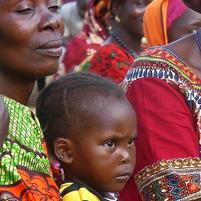Earlier this month, “Women Deliver”, the 5th Global Conference on Gender Equality, Health, Rights and Well Being of Girls and Women, took place in Vancouver. This is the world’s largest meeting to stimulate debate and action to generate the political will for greater investment in the improved health of girls and women. Organised by the international NGO Women Deliver, the conference brought together diverse voices and interests to drive progress for gender equality, focussed especially on maternal, sexual, and reproductive health and rights.
The conference focus was not only on maternal, sexual, and reproductive health and rights, but also a range of issues including education, environment, political participation, economic empowerment, human rights, gender-based violence and access to resources. However, as a number of participants pointed out, consideration of women and ageing has been missing from previous conferences. That has begun to change however, with sessions at the 2019 conference under the ‘Person Centred Care’ cluster, co-hosted by three international NGOs, HelpAge International, the Non Communicable Disease Alliance (NCDA) and the International Federation of Gynecology and Obstetrics (FIGO). Sessions addressing advocacy for the rights of older women and on the potential of girls and women at all ages were also included for the first time.
Nevertheless, the lack of attention to women and ageing in this major international conference emphasises the continuing need to raise the profile of older women and their health issues within global gender and health debates, and this is particularly the case with issues of sexual and reproductive health rights (SRHR). Attention in the development agenda is concentrated particularly on women of childbearing age; stereotypical views of older people mean that their physical intimacy is rarely acknowledged in most societies, and is a taboo subject in some. Such research as has been undertaken on SRHR in later life has largely been carried out in high-income settings with well-developed health systems. There has also been a strong focus on sexual vulnerability, which although undeniably a significant issue, may perhaps also reflect prevailing social attitudes towards women and ageing.
For this to change, arguably a number of factors need to be addressed. In low- and middle-income countries (LMICs) in particular, older women and men continue to suffer exclusion and to face multiple challenges in accessing services. Although the UN's Sustainable Development Goals (SDGs) indicators and targets implicitly include all women and girls, in reality a coherent life course perspective is missing. The focus of most health interventions is overwhelmingly on the early and biologically reproductive stages for girls and women. The later stages of the life course are not addressed, despite later life age-specific impairments and conditions as well as discrimination at that life stage.
This is not to deny the serious challenges which remain in addressing the health challenges faced by women earlier in the life course. Although maternal mortality in low-income countries has declined significantly, up to 50 million women per year are injured or seriously disabled during childbirth, suffering from conditions such as severe anaemia, incontinence, damage to the reproductive organs or nervous system, chronic pain, and infertility. These conditions can worsen in later life, leading to greater dependence, lower quality of life and increased marginalisation and vulnerability, and overall reduced capacity. Often as a result of earlier life course health issues, older women may experience specific sex- and age-related health issues, including heart disease and risk of stroke, gynaecological malignancies and osteoporosis. Many women suffering from obstetric fistulae in their childbearing years must carry the condition into older age, linked with negative health and social consequences; for example, a lack of access to treatment may be accompanied by social isolation. Older women are likely to be living with one or more chronic conditions and also facing specific barriers to accessing affordable and appropriate health care.
Women need holistic, person-centred and long term sexual and reproductive health care policies across the life course, for which research is needed to further understanding of the sexual and reproductive health needs and rights of older women and men. Since healthcare and Sexual and Reproductive Health and Rights (SRHR) continue to be primarily geared to women of reproductive age, the needs of girls and of women after the menopause are neglected. There is almost no published evidence regarding older people and SRHR in LMICs. This is the case even where studies specifically examine older people’s health. While there is some literature on women’s health and the menopause in LMICs, again there is very little evidence of the consequences of the menopause in later life, the focus being on SRH issues approaching and during the menopause. We still know more about men's health than women's health over the life course, although we do not know enough about either in old age. This lack of well-founded research evidence on older women’s health is a major barrier to informed debate. Further investment in health data collection and analysis, disaggregated by sex, age and disability is urgently needed, and the relevance of upper age limits on data sources need to be questioned.
Finally, older women, particularly those from excluded groups, need representation at all levels in the design and delivery of policies and services, especially in decision-making processes. In many places, from the household level to the local, national and international level, women face additional and significant challenges in raising their voices and being heard. As a result, women in LMICs are more likely to be poor, experience violence, have higher rates of illiteracy and innumeracy, acquire a disability and lack access to adequate nutrition and healthcare throughout the life course.
Disparities therefore persist throughout women and girls’ lives, and more often than not, intensify with age. Older women can also suffer from ageist attitudes and practices that discriminate particularly against widowed or single older women, or rural and migrant older women. Ageism is widespread within health systems and may create barriers that prevent older people from receiving adequate health care. However, with appropriate health care and a supportive environment – including increasing opportunities for older women to participate in society – women can remain active and healthy well into old age. Addressing the SRHR of women in later life is a key step in this journey.
About the Author
Mark Gorman is a Visiting Fellow at the Oxford Institute of Population Ageing. He is the Director of Strategic Development at HelpAge International.
Comments Welcome
We welcome your comments on this or any of the Institute's blog posts. Please feel free to email comments to be posted on your behalf to administrator@ageing.ox.ac.uk or use the Disqus facility linked below.
Opinions of the blogger is their own and not endorsed by the Institute
Comments Welcome: We welcome your comments on this or any of the Institute's blog posts. Please feel free to email comments to be posted on your behalf to administrator@ageing.ox.ac.uk or use the Disqus facility linked below.













